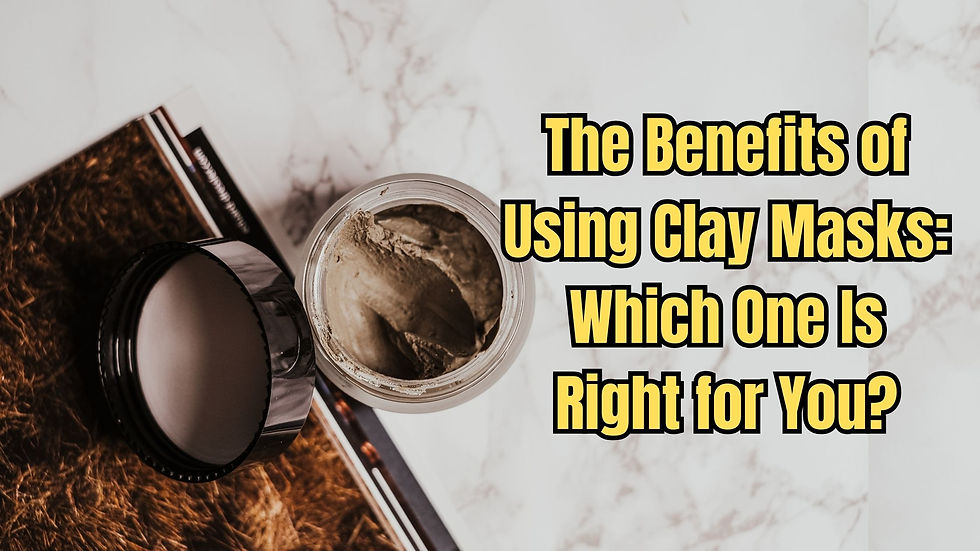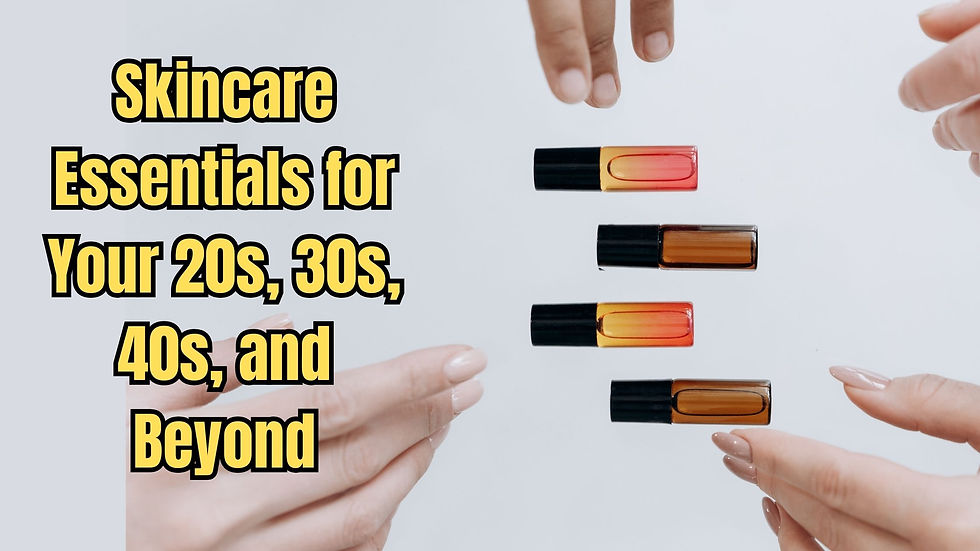How to Identify and Treat Fungal Acne
- Akram Beauty Booth
- Dec 17, 2024
- 3 min read
Updated: Jan 1

Fungal acne, despite its name, isn’t actually acne. It’s a skin condition caused by an overgrowth of yeast called Malassezia, which naturally lives on the skin. Unlike bacterial acne, fungal acne often appears as small, uniform bumps that are itchy and occur in clusters, particularly on oily areas like the forehead, chest, and back.
If you’ve tried conventional acne treatments without success, it’s possible you’re dealing with fungal acne. Let’s break down how to identify and treat this stubborn condition effectively.
How to Identify Fungal Acne
1. Appearance and Symptoms
Uniform bumps: Fungal acne usually presents as small, red, or flesh-colored bumps that are uniform in size.
Clusters: These bumps often appear in groups or clusters.
Itchiness: Unlike regular acne, fungal acne is frequently itchy.
Oily areas: It is most commonly found on the forehead, upper back, chest, and shoulders—areas with a high concentration of sebaceous (oil) glands.
2. Causes
Fungal acne is caused by an imbalance in the skin’s microbiome, allowing yeast to overgrow. Triggers include:
Hot and humid climates: These conditions create an ideal environment for yeast to thrive.
Sweating and tight clothing: Sweat trapped against the skin can lead to yeast overgrowth.
Overuse of antibiotics: Long-term use of antibiotics can kill bacteria that keep yeast in check, leading to an imbalance.
Oily skin: Excess oil provides food for the yeast, encouraging its growth.
Weakened immune system: This can also make you more susceptible to fungal infections.
3. Differentiating from Bacterial Acne
Fungal acne is often confused with bacterial acne, but here are the key differences:
Fungal acne tends to be uniform in size, while bacterial acne can vary in size (e.g., papules, pustules, cysts).
Fungal acne is itchy, whereas bacterial acne is usually not.
Bacterial acne often responds to traditional treatments like benzoyl peroxide and salicylic acid, but fungal acne does not improve with these methods.
How to Treat Fungal Acne
Treating fungal acne requires targeting the yeast overgrowth rather than bacteria. Here are the most effective strategies:
1. Use Antifungal Products
Topical antifungal treatments: Look for products containing ketoconazole, clotrimazole, or miconazole, which are commonly used to treat fungal infections. These can be found in medicated creams, shampoos, or over-the-counter sprays.
Antifungal shampoos: Shampoos containing ketoconazole or selenium sulfide (such as Nizoral or Selsun Blue) can be used as a body wash on affected areas. Apply, leave on for 5-10 minutes, and rinse off.
2. Keep Your Skin Dry
Since yeast thrives in moist environments, keeping your skin dry is crucial:
Shower immediately after sweating: This helps remove sweat and oil that can encourage fungal growth.
Wear breathable fabrics: Opt for loose, moisture-wicking clothing to reduce sweat buildup.
3. Adjust Your Skincare Routine
Certain products can exacerbate fungal acne, so consider these changes:
Avoid heavy, oily products: Skip thick moisturizers, body oils, and comedogenic sunscreens that can feed the yeast.
Use oil-free, non-comedogenic products: These are less likely to contribute to fungal growth.
Exfoliate gently: Use products containing salicylic acid or glycolic acid to help reduce excess oil and dead skin cells. Avoid over-exfoliation, which can irritate the skin and worsen fungal acne.
4. Consider Oral Antifungals
For severe or persistent cases, consult a dermatologist. They may prescribe oral antifungal medications like fluconazole or itraconazole to combat the infection from within. These treatments are effective but should only be used under medical supervision.
5. Maintain a Balanced Diet
Diet can influence your skin's microbiome:
Reduce your intake of sugar and refined carbs, which can feed yeast.
Incorporate foods rich in probiotics (like yogurt or fermented foods) to promote a balanced microbiome.
Preventing Fungal Acne
Preventing fungal acne involves managing the conditions that allow yeast to thrive. Here are some preventive measures:
Stay cool and dry: Avoid staying in sweaty clothes for long periods.
Wash workout clothes frequently: Make sure they’re clean and dry before wearing them again.
Use antifungal shampoos weekly: Even after symptoms improve, using these as a preventive measure can help maintain skin balance.
Limit antibiotics: Avoid overusing antibiotics unless prescribed by a doctor, as they can disrupt your skin’s natural balance.
When to See a Dermatologist
If you’ve tried over-the-counter treatments and lifestyle changes without success, it’s time to see a dermatologist. They can confirm whether your condition is fungal acne and recommend prescription-strength treatments or oral medications.
Conclusion
Fungal acne can be frustrating, but with the right approach, it is manageable and treatable. Identifying the condition correctly is the first step, followed by using antifungal treatments, maintaining good hygiene, and avoiding triggers like heavy skincare products and excessive sweating. With patience and consistent care, you can restore your skin’s balance and achieve clearer, healthier skin.





Kommentare